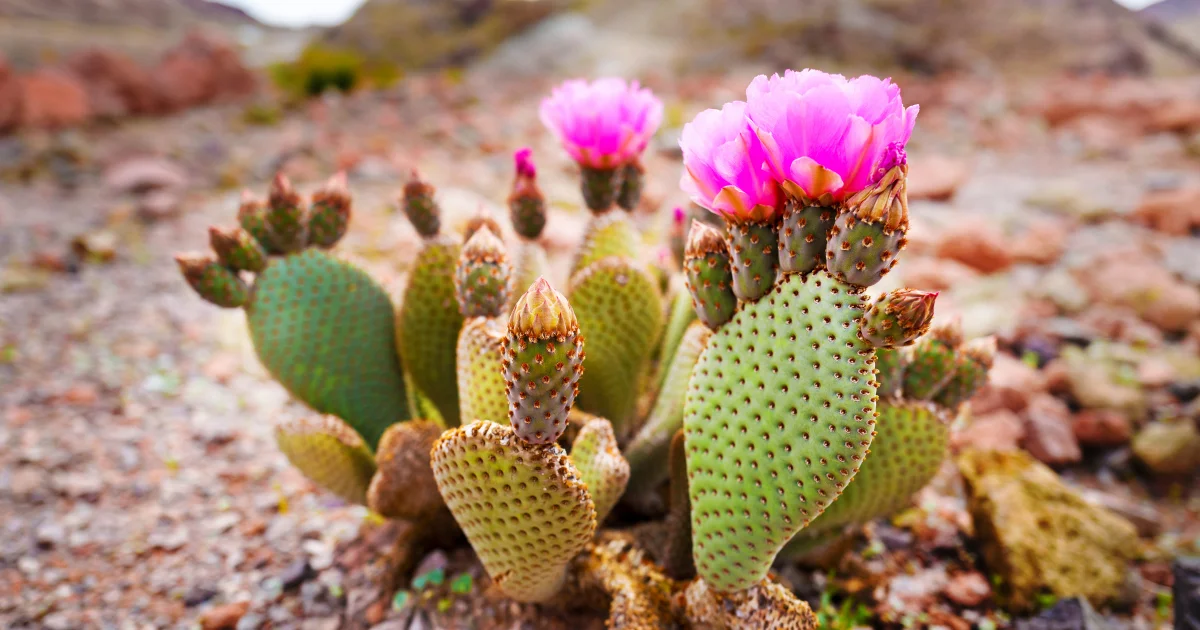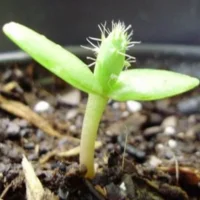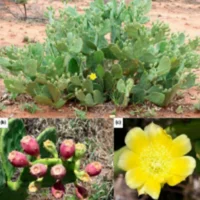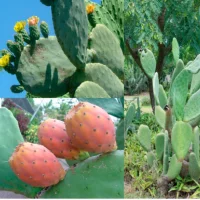Prickly Pear Cactus Growth Stages

As a gardener, there’s a unique thrill in nurturing the life cycle of a prickly pear cactus. From the moment the stubborn seedling pushes through the soil, to the day its lush pads unfurl and burst into a riot of colorful blooms, every stage is a milestone.
In this guide, I’ll walk you through these stages, sharing my own experiences of coaxing these hardy desert dwellers to reveal their full splendor.
Together, we’ll explore how to help prickly pear cactus flourish, from pad formation to fruiting, turning your gardening space into a showcase of nature’s resilience. Let’s get started!
Prickly Pear Cactus Growing Conditions
The growth of prickly pear cacti is a testament to their resilience, as they are capable of expanding 1 to 2 feet (30 to 60 cm) each year depending on the variety and their growing conditions. These cacti are remarkably adaptable to various environments, yet they flourish best under these specific conditions that foster their optimal growth:
- Sunlight Requirements: The Eastern Prickly Pear requires full sun, meaning it should receive 6 or more hours of direct sunlight a day.
- Soil Conditions: It thrives in sandy or shallow rocky soil that has good drainage. The soil should occasionally be very dry, indicating that the cactus can tolerate periods of drought.
- Flowering and Fruiting: The cactus produces flowers that are gold, yellow, orange, or red/burgundy, and they bloom in the summer. The fruit is a berry that ranges from 1-3 inches in size and matures from green to red or purple. These fruits are edible and may be bland, sour, or sweet.
- Foliage: The leaves are modified into spines, and the flattened stems act as the photosynthetic surfaces of the plant. These are green and edible but are covered in barbed bristles and may have long spines on the margins.
- Landscape Use: Suitable for coastal areas, containers, meadows, naturalized areas, and slopes. It fits well into drought-tolerant, edible, and rock gardens, and can be used as a border or in small groups. The plant is resistant to deer, drought, dry soil, rabbits, and salt but can have problems with spines and thorns.
Prickly Pear Cactus Growth Stages with Pictures:
1. Seedling Stage: Sprouting Life
Germination Time: Typically 2-4 weeks, but can take several months in less than ideal conditions.

The journey of a prickly pear cactus begins with a tiny seed. Under optimal conditions—warm temperatures, minimal moisture, and good soil—it will germinate.
It might take 21 to 180 days for the seeds to start growing. The growth at this stage is slow and the seedlings are delicate, requiring protection from extreme elements.
Care Tips:
- Moisture Management: Keep the soil slightly moist but not waterlogged to prevent rot.
- Warmth and Light: Provide a warm environment and indirect light to encourage germination.
- Gentle Care: Handle seedlings with care when necessary; they’re extremely delicate.
Related Article: How to Grow a Prickly Pear Cactus
2. Juvenile Stage: Establishing Roots
Development Time: Around 1-2 years for the cactus to establish a strong root system and start forming nopales.
As the seedlings transition into the juvenile stage, you’ll notice the formation of the characteristic cactus pads or ‘nopales’. This is a critical phase where the prickly pear cactus growth time is most evident. The plant is establishing its root system, which is crucial for nutrient and water uptake.
For gardening enthusiasts looking to grow prickly pear cactus in containers, this is the ideal time to pot the juveniles, ensuring that the container size accommodates the cactus’s potential growth.
Care Tips:
- Pot Selection: If in containers, choose one with ample drainage and room for growth.
- Soil Quality: Use a well-draining cactus mix to promote healthy root development.
- Watering Schedule: Allow the soil to dry out between watering to encourage strong root growth.
See Also: Best Indoor Plants for the Living Room
3. Maturing Stage: Gaining Character
Growth Time: It can take anywhere from 3-5 years for the prickly pear to reach maturity and start taking on its full size and character.

Reaching the prickly pear cactus growth stages of maturity means that the plant is starting to develop its own unique shape and personality. This is when the question ‘how big do prickly pear cactus get’ starts to unfold.
The cactus pads thicken and enlarge, and depending on the species and growing conditions, the cactus can start to spread outwards or upwards, with some species capable of reaching impressive heights and widths.
Care Tips:
- Sun Exposure: Gradually introduce the cactus to more direct sunlight to encourage hardiness.
- Nutrition: Consider a balanced, slow-release fertilizer formulated for cacti during the growing season.
- Spacing: If you’re growing multiple cacti, give them enough space to expand.
Must Read: Can You Grow Peonies Indoors?
4. Flowering Stage: A Burst of Color
Bloom Time: Most prickly pear cacti begin flowering in early summer, although the exact time can vary depending on the climate and conditions.
One of the most exciting stages in the growth of a prickly pear cactus is the flowering period. The cactus blooms with striking flowers that can range in color from yellow, orange, to vibrant reds and purples. This spectacle is not only a joy to behold but also signals that the cactus is well-established and healthy.
Care Tips:
- Pollination: If indoors, you may need to hand-pollinate to encourage fruit production.
- Water Needs: Maintain a consistent watering schedule, but be cautious not to overwater.
- Support Structures: For taller species, provide support to prevent them from toppling over under the weight of the blooms.
5. Fruiting Stage: The Reward
Fruit Development: After flowering, it can take several weeks to a few months for the fruit to fully develop and ripen.

Following the blooms, the prickly pear cactus begins to set fruit. These fruits, known as ‘tunas’, can be a variety of colors, just like the flowers. They are not only edible but are a staple in many cultures, valued for their sweet taste and health benefits.
Care Tips:
- Monitor for Pests: Keep an eye out for pests that might be attracted to the fruits.
- Reduced Fertilizing: Cut back on fertilizing to allow the plant to focus on fruit development.
- Harvesting: Harvest fruits carefully to avoid damaging the plant.
6. Dormant Stage: Rest and Resilience
Dormancy Period: Typically occurs in the colder months, lasting until the temperatures start to rise again in spring.
As with many plants, the prickly pear cactus has a period of dormancy, typically during the colder months. This is when growth ceases temporarily, and the plant conserves energy. It’s a stage that often worries novice gardeners, but it is a natural part of the plant’s life cycle.
Care Tips:
- Water Reduction: Significantly reduce watering as the plant will be consuming less.
- Temperature: Keep the cactus in a cooler spot if possible to mimic natural seasonal changes.
- Rest Period: Avoid fertilizing and minimize handling or repotting during this stage.
See Also: Peony Growth Stages Pictures
Conclusion
The prickly pear cactus growth stages form a cycle of life that is as enduring as it is fascinating. From a small seed to a sprawling cactus with its own fruits and blooms, the journey is a testament to the resilience and beauty of these plants.
Whether you’re growing prickly pear cactus in containers or in your garden, understanding these stages can help you provide the best care for these remarkable plants.
Citations:
Opuntia Humifusa - North Carolina Extension Gardener Plant Toolbox Challenges Inherent in Controlling Prickly Pear Species - MDPI

Thanks for the info, texas Tony
I am having a hard time with the age of a prickly pear cactus we had.
The president of the hoa took it upon himself to remove and kill our 10 foot high by 6 foot wide prickly pear that was in the fouer of our courtyard here in sun city az.
The heat took its toll on the desert plants and cacti last summer. It was sickening to see cacti that normally stand straight up then drooping like a christmas cactus the next day.
Then the one that survived. Was health and huge, was killed and removed.
I am deeply devasted over this. It seems that it’s become the general source of entertainment around here. That a lot of seniors in these types of neighborhoods like everything to be sparce. No trees or cactus.
Sorry for the disappointing story. Back to my original question, lol, I’m hoping you can tell me the age of a prickly pear with that rare size.
Thank you